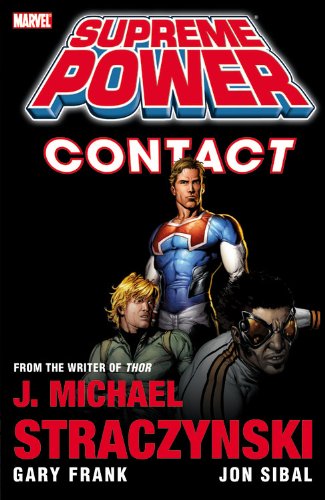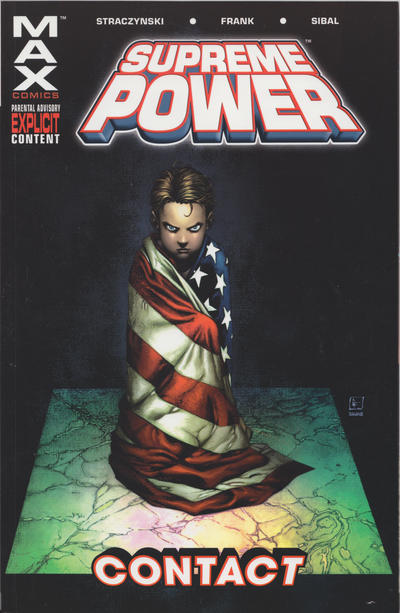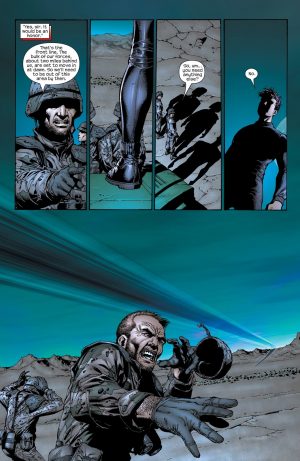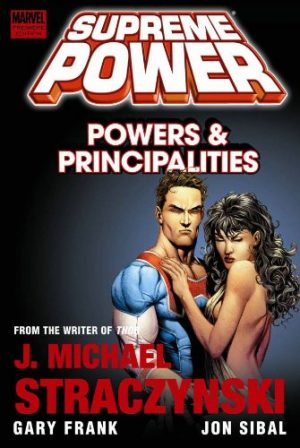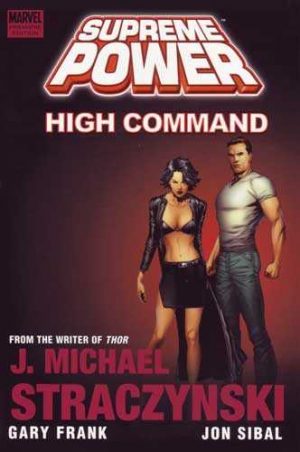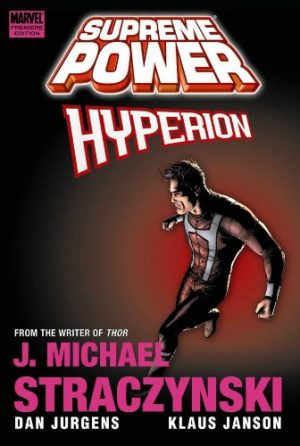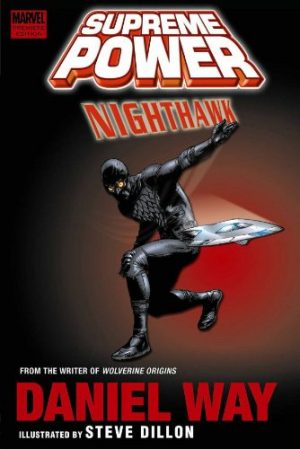Review by Karl Verhoven
Supreme Power is J. Michael Straczyskis’s reworking of Squadron Supreme, set on an alternate Earth where heroes other than the standard Marvel batch of Spider-Man, Hulk and Iron Man developed.
Straczynzki begins with an alien infant crash landing in the 1970s, immediately co-opted by American authorities aware of how the child might develop. He can’t say so, but with the same nod and wink applied by Hyperion’s creator Roy Thomas back in 1969, we know this is a different version of Superman. Named Mark Milton, he’s confined within a secure environment, placed with a couple playing the role of parents, while given an upbringing and education that reinforces loyalty to the USA above all else. Because Straczynski doesn’t bother with thought balloons or narrative captions our only choice is to take dialogue at face value. On the few occasions when he wants us to know what he’s thinking it’s covered by a sequence of illustrations, so making Mark tell the man who’s paid to raise him “I love you just as much as you love me” very sinister. Later dialogue is cleverly written, giving indirect answers to direct questions via snippets of TV commentary or something else random. Also clever are subtle visual cues.
Once Mark’s established, Straczynski begins to spread the spotlight around the other people who’ll unite as a super team, while the now teenaged Mark gradually becomes more and more disenchanted with his life. Possessing vision enabling him to see for miles and hearing able to tune in on conversations almost anywhere make it very difficult to keep secrets from him, something the authorities don’t know at first. Straczynski also weaves in history from our 1980s and 1990s, giving it a new spin as different solutions are applied, some attracting the attention of a suspicious journalist.
The meticulous set-up and switching of scenes indicate lessons learned during Straczynski’s TV dramatist career, and separated his approach from the standard superhero comics at the time, although other writers have since learned from him. It requires Gary Frank to draw page after page of establishing scenes with very few glimpses of superhero action until the final chapter. Frank buys into the idea of this being a more or less real world, and disciplines himself for the sake of the story. That applies even when the use of super powers is more overt. Frank keeps the art understated, and running or flying is almost all we see.
Half of Contact is set-up. To construct a society having to become used to superheroes in their midst when they were previously just fiction needs a focus on reactions, not just from civilians, but the authorities, and Straczynski and Frank carry this out very efficiently, if sometimes being on the dry side. Mark is supposed to be distant and withdrawn, and that affects the overall mood, which brightens toward the end as others are introduced, although only one of them could really be considered light and unaffected. By the end of the book three further characters have been seen who either have super powers or fight criminals, and there have been hints of another. It’s generally been a job well done.
Supreme Power was originally issued in paperback, but reissued in standard size hardcover in 2010, as was the next volume Powers and Principalities. Alternatively both are combined as the oversized hardback Supreme Power Vol. 1.
